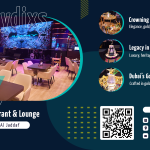Choosing a Domain Name
When choosing a domain name for your website, it is important to consider several factors. First, make sure the domain name is easy to remember and spell. This will make it easier for visitors to find your website and share it with others. Additionally, consider including keywords related to your business or industry in the domain name to improve search engine visibility. It is also a good idea to choose a domain name that reflects your brand and is unique to avoid confusion with competitors. Finally, check the availability of the domain name and consider purchasing multiple variations to protect your brand.
Selecting a Web Hosting Provider
When selecting a web hosting provider, it is important to consider factors such as reliability, speed, security, and customer support. Look for a provider that offers a high uptime guarantee, fast loading times, robust security measures, and 24/7 technical support. Additionally, consider the scalability of the hosting plans offered to ensure that your website can accommodate growth in traffic and data storage needs. It is also beneficial to read reviews and seek recommendations from other website owners to ensure that you are choosing a reputable and trustworthy hosting provider.
Installing a Content Management System (CMS)
A Content Management System (CMS) is a software application that allows users to create, manage, and publish digital content on a website without needing to have extensive technical knowledge. Installing a CMS typically involves downloading the software from a trusted source, uploading it to a web server, and configuring it to work with the website’s domain and database. Once installed, users can easily create and update content, manage user permissions, and customize the design and functionality of their website through a user-friendly interface. Popular CMS options include WordPress, Joomla, and Drupal.
Designing a User-Friendly Layout
When designing a user-friendly layout, it is important to consider the needs and preferences of the target audience. Start by organizing content in a clear and logical manner, with easily accessible navigation menus and search options. Use consistent and intuitive design elements, such as color schemes, fonts, and button styles, to create a cohesive visual identity. Keep important information above the fold and minimize clutter to improve readability and user engagement. Incorporate interactive elements, such as clickable buttons and scrolling features, to enhance user interaction and make the layout more engaging. Conduct user testing and gather feedback to continually improve and optimize the layout for a seamless and enjoyable user experience.
Creating Categories and Tags for Organization
Categories and tags are essential tools for organizing content on a website or blog. Categories help to group similar content together, making it easier for users to navigate and find relevant information. Tags, on the other hand, are more specific and provide additional context to individual pieces of content. By creating a well-defined system of categories and tags, content creators can improve the overall user experience and make it simpler for users to discover and consume the content that interests them. This organization also benefits search engines, helping them to better understand the content and improve the website’s visibility in search results.
Customizing Your Website’s Theme
When customizing your website’s theme, it’s important to consider your brand’s identity and target audience. Choose colors, fonts, and design elements that align with your brand’s aesthetic and messaging. Make sure your website is easy to navigate and visually appealing by organizing content in a logical and intuitive way. Don’t forget to optimize your theme for mobile devices and ensure that it loads quickly to provide a seamless user experience. By taking the time to customize your website’s theme, you can create a visually stunning and user-friendly website that effectively communicates your brand’s message.
Setting Up Social Media Integration
Setting up social media integration is crucial for businesses looking to expand their online presence and reach a wider audience. By integrating social media platforms such as Facebook, Twitter, and Instagram into their website or app, businesses can easily share content, engage with customers, and drive traffic to their site. This integration also allows for seamless sharing of content across different platforms, increasing visibility and brand awareness. Additionally, social media integration can help businesses track and analyze user engagement, monitor trends, and tailor their marketing strategies to better target their audience. By incorporating social media into their digital strategy, businesses can effectively connect with their customers and build a strong online presence.
Implementing SEO Strategies for Visibility
Implementing SEO strategies is crucial for improving visibility and driving organic traffic to a website. By optimizing on-page elements such as meta tags, headings, and content, as well as building high-quality backlinks and improving site speed, businesses can improve their search engine rankings and increase their chances of being found by potential customers. Additionally, conducting keyword research and regularly updating and adding fresh content can help to keep a website relevant and competitive in the ever-evolving digital landscape. Overall, investing time and resources into SEO can lead to long-term success and sustainable growth for a business online.
Writing Compelling Headlines and News Articles
In order to write compelling headlines and news articles, it is important to grab the reader’s attention right from the start. This can be achieved by using strong, action-oriented language, posing thought-provoking questions, or highlighting a unique angle or perspective on the topic. Additionally, headlines should be concise and to the point, while news articles should provide valuable information in a clear and engaging manner. By focusing on these key elements, writers can create headlines and news articles that are not only attention-grabbing but also informative and compelling to readers.
Adding Multimedia Content for Engagement
In today’s digital age, incorporating multimedia content is essential for engaging audiences and capturing their attention. By including a variety of multimedia elements such as videos, images, and animations, businesses can create a more interactive and visually appealing experience for their target audience. This not only helps in retaining the audience’s interest but also allows for better communication of information and messages. Additionally, multimedia content can be easily shared across different platforms, increasing reach and engagement with a wider audience. Overall, incorporating multimedia content is a powerful tool for enhancing engagement and creating memorable experiences for consumers.






